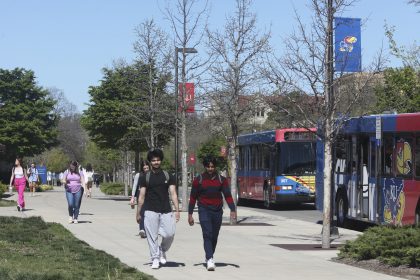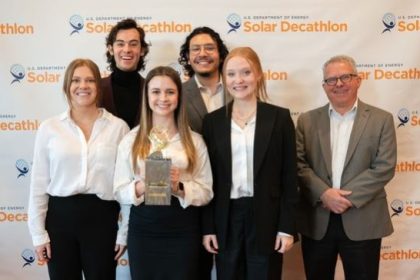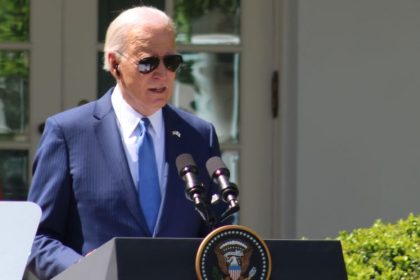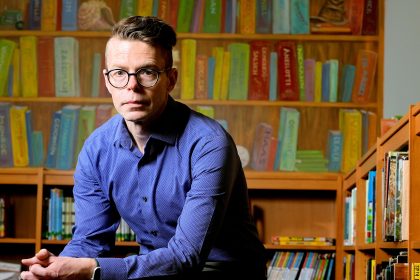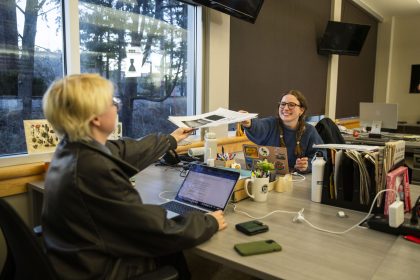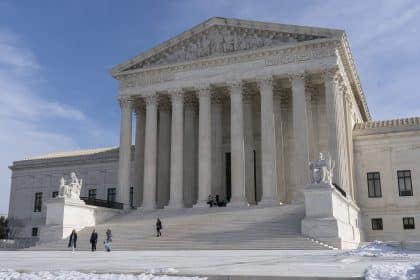Higher Ed Solutions for Rural Students

After graduating from her rural Pennsylvania high school in 2005, Tesla Rae Moore did what most American high school seniors today expect to do: she left home for college with her sights on a four-year degree. But when she was a sophomore in nursing school at the University of Pittsburgh at Bradford, the unexpected intervened: she became pregnant with her son.
“It was a high-risk pregnancy, and I decided to stop the program,” she said. Moore returned to her hometown of Kane, a community of about 3,500 in northwestern Pennsylvania. At first intending just to take a break, she ended up dropping out. “I was going to go back, and then it was just one of those things,” she said. “Life happened.”
Moore didn’t lose her desire to return to college; she just couldn’t figure out how to make it work. As a single mom, she couldn’t quit her job. Moreover, getting to Pitt-Bradford, the nearest four-year institution, required a ninety-minute round-trip commute. The closest two-year college, in Butler County, was a two-hour drive each way. Online-only classes might have been a solution, but Moore felt she needed more structure to succeed. “Especially for somebody that’s been out of school, it takes a lot of discipline,” she said.
A surprising number of Americans face the same problem Moore did. According to the Urban Institute, as many as 41 million American adults live 25 miles or more from the nearest college or university or in areas where a single community college is the only source of broad-access public higher education within that distance. Three million of the Americans in these so called “higher education deserts,” say scholars Victoria Rosenboom and Kristin Blagg, lack broadband internet, as well.
In the past, a dearth of higher education institutions in a particular area might not have mattered as much. But as the full-time, four-year, residential experience of college becomes increasingly expensive and less attainable for some students, and as more students must juggle work and family responsibilities, proximity to a college or university could be the deciding factor in whether or not a student pursues a degree or, as in Moore’s case, finishes one.
The impact goes beyond would-be students themselves. Communities that lack local colleges and universities also often lag in economic development, as they miss out on the spin-off start-up businesses and cultural amenities that institutions of higher education often create and that are increasingly necessary for attracting upscale residents and businesses. Growing up in an “education desert” thus not only makes it harder to attend college, but also means there are fewer opportunities for upward mobility in your hometown even if you do graduate. The richest 10 percent of the nation’s zip codes are predominantly college-rich metro areas, urban and suburban, with the best educated residents, while a majority of the poorest zip codes are rural.
While better access to higher education in rural America would help heal such inequities, establishing a college in every rural area that needs one is a cost-prohibitive proposition. But a few states are pioneering a leaner, cheaper approach that relies on technology to create oases of learning in higher education deserts. Variously called “higher education centers” or “virtual colleges,” they provide physical infrastructure for colleges to offer online and in-person instruction in places where no brick-and-mortar institutions exist. In some areas, they also offer occupational training in line with the needs of local businesses and act as pop-up satellite campuses, community colleges and training agencies rolled into one.
For example, in 2014, Pennsylvania’s Legislature authorized creation of a “rural regional college” tasked with bringing greater higher education opportunities to an area encompassing 7,000 square miles over nine counties. Launched as the Education Consortium of Upper Allegheny, with a budget of just $1.2 million, the effort was rechristened the Northern Pennsylvania Regional College, or the NPRC, in 2017.
Rather than a single flagship location, the college operates six different “hubs” — physical mini campuses — scattered throughout the region, plus numerous “classrooms” using borrowed space from local high schools, public libraries and other community buildings. The NPRC doesn’t confer its own degrees; rather, it provides the infrastructure for other accredited institutions to extend their reach through blended offerings combining virtual and in-person teaching.
The Pennsylvania initiative turned out to be what ultimately rescued Moore’s aspirations to finish her education. She became one of its first graduates, earning an associate degree in business administration from Gannon University, a private Catholic university based in Erie, Pa. Four nights a week, Moore drove to the local high school, where she joined her classes via videoconference. She was spared the two-hour trip to Erie, which would have been impossible for her to manage with her two young children and full-time job. Night classes also meant she got to keep her day job and made it easier to find babysitting.
Ultimately, Moore was able to jump from a job as an aide at a group home to a position in Northwest Bank’s corporate headquarters in nearby Warren. Moreover, college was affordable. NPRC charges students $185 per credit hour — significantly less per credit hour than Moore would have paid if she’d attended Gannon full-time.
Joseph Nairn, founding president of the NPRC, said the institution’s physical presence offers two benefits over strictly online institutions. First, it gives the many students who don’t have broadband internet at home a way to get online. Second, requiring students to attend classes and interact with faculty members and other students provides the structure many need to stay on track — ultimately leading to better outcomes.
Virginia and Maryland have launched rural higher education centers of their own. Like the NPRC, their centers typically partner with other institutions to offer courses either under one roof or through a network of physical and virtual sites. The Southern Virginia Higher Education Center in South Boston, Va., for instance, provides classes through Longwood University and Danville Community College, as well as occupational training in welding, IT, nursing and “mechatronics,” an emerging field linked to advanced manufacturing. In Maryland, the Southern Maryland Higher Education Center offers specific courses from 10 different institutions, including Johns Hopkins and the University of Maryland. Most of these institutions also offer dual enrollment to area high school students to give them a head start on earning college credits.
Rural higher education centers are a potential boon to local economic development, as well. In southern and western Virginia, for instance, they are helping rebuild a region hollowed out by the loss of manufacturing and tobacco. From the late 1990s to the early 2000s, Halifax County, Va., saw multiple factories shut down, including a Russell Stover facility in 2002, and textile plants owned by Burlington Industries and J.P. Stevens. Meanwhile, the region’s once prosperous tobacco farmers found themselves in losing fights against both China’s burgeoning tobacco industry and the U.S. government’s efforts to reduce smoking. Over just a four-year period, estimates current town manager Tom Raab, South Boston lost $50 million in payroll and another $50 million in lost tobacco sales.
Handicapping the region’s reinvention was the lack of nearby colleges and universities that could lend intellectual capital, train workers in new skills and help local business and community leaders plan new economic development. The region’s five higher education centers, however, are at least partly filling that void. Chief among those is the Southern Virginia Higher Education Center, which started in a 500-square-foot trailer in 1986 but now occupies 100,000 square feet of renovated space in two repurposed tobacco warehouses. The center tries to tailor its course offerings to the needs of local businesses and to help attract new industries. In 2017, the center placed 173 students into new jobs. And recently it also opened an “innovation lab” to provide manufacturing and consulting services to local businesses. Earlier this spring, the lab was developing prototypes of recyclable wine barrels for a consortium of Virginia wineries.
Certainly, higher education centers are no means a panacea for rural students. So far, these institutions provide a limited array of courses and can’t substitute for the comprehensive offerings of a full-fledged college or university. Moreover, despite lower costs, affordability is still an issue for many students. The hybrid structure also means fewer support services for students who struggle.
Nevertheless, by bringing opportunities for higher education where none had existed before, this model could be a boon to other rural areas around the country. Given the early successes, more states should explore the idea of creating rural higher education centers, potentially with federal help, while the states that have adopted this model should consider refining and expanding the model as they discover what works. Colleges and universities, moreover, should embrace this innovation as a way to expand their reach and help more students succeed. By alleviating educational and economic disparities between rural and urban areas, higher education centers could benefit not only students and communities in rural areas but the nation as a whole.
This piece orginally ran in Inside Higher Ed on August 23, 2018.


















